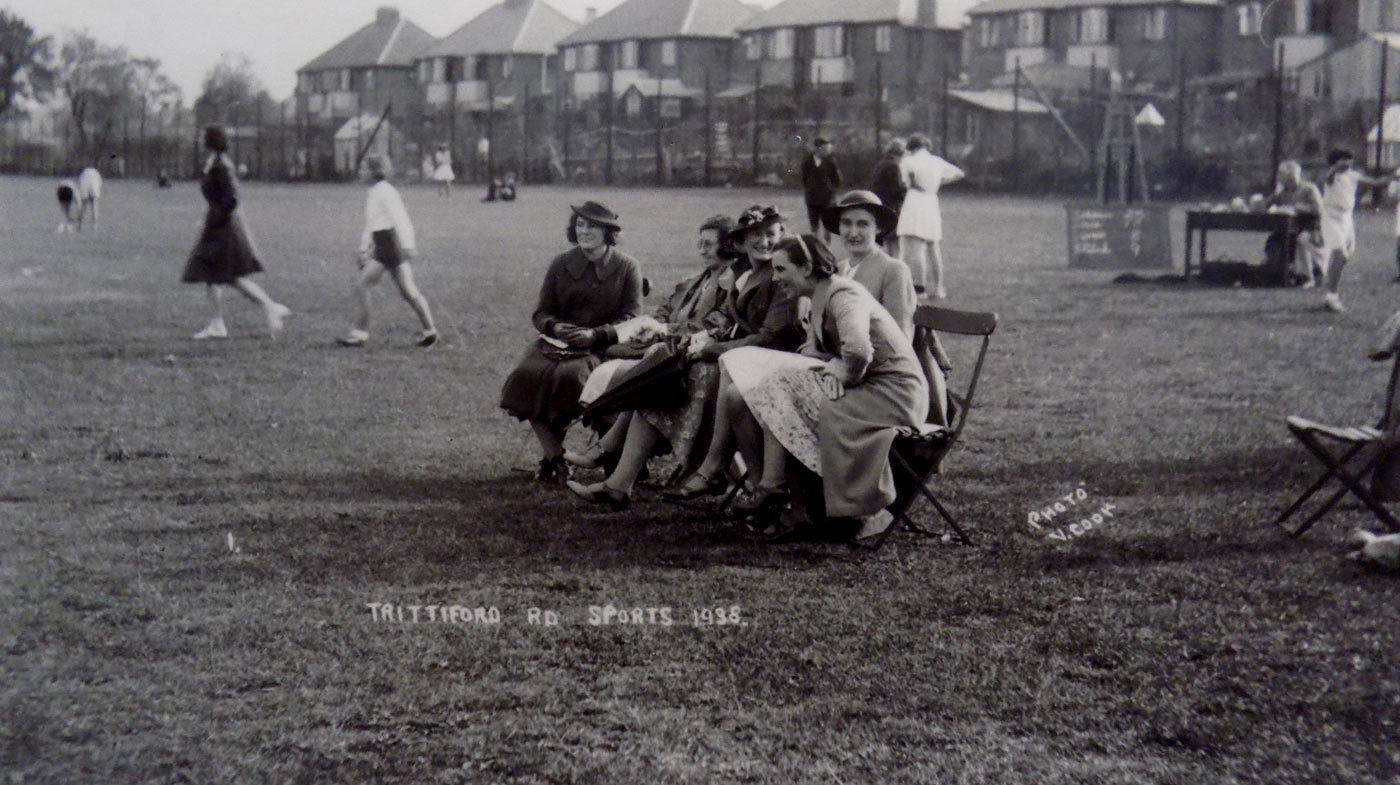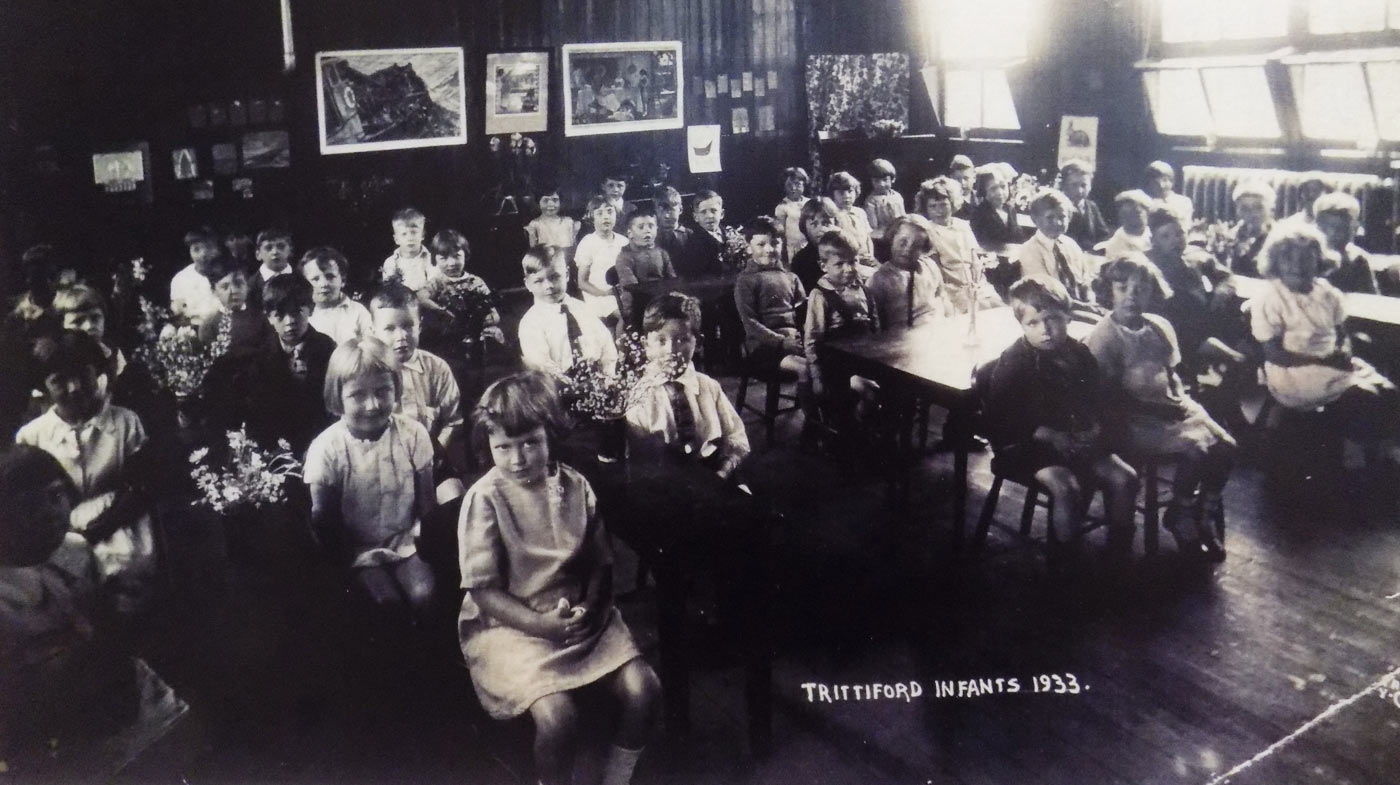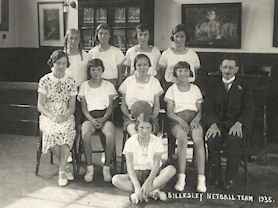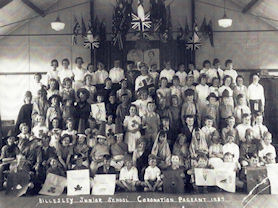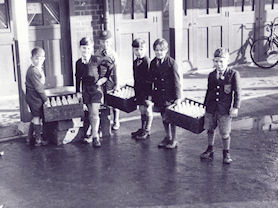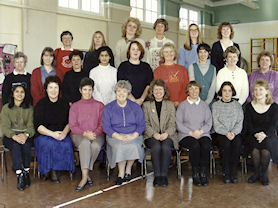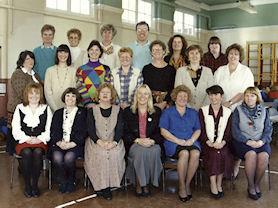The School Opens
Billesley Infants' and Junior Mixed School was opened on 9th November 1925 for the admission of children aged 5 to 9 years old. The Headteacher, Miss Adamson, commented that "the weather has been severely cold during the week and the heating apparatus has proved splendidly adequate. The majority of the children are under 8 years of age and most of the staff have had no experience of teaching children of that age."
It is interesting to note how many of the issues which concern us still were a problem for schools even then; for example on the week of 15th January 1926, attendance was 67.9% due to colds and 'many cases of measles'. These issues are noted again and again in the school log book over the years.
In June 1926, the school held open days for parents to come and see the work the children have being doing and to view the school. 500 parents attended and saw singing, dancing, end of term papers and handwork.
The Headteacher commented "It has created a bond of friendship and co-operation between the parents and teachers which will be a great help", a statement that we would echo here at Billesley today!
At a later date, lectures were given for mothers on matters such as personal hygiene and parents were able to buy 'useful little books' with titles such as 'What mothers should tell their children'.
In November 1926, the Senior Department was opened and 120 children were transferred together with a further 160 children. The total on the school roll by then was 647 with 100 more still waiting for places! It is especially interesting to note class sizes at the time which would seem very large by today's standards!
In 1928, HMI visited the school and commented that 'the Head Mistress and her staff are to be congratulated on what they have achieved in difficult circumstances….the serenity of the Head Mistress in the midst of constant disturbance has had the most valuable effect on children and staff alike'.
On 1st May, 1928 a new Headteacher of the Senior Department was appointed, Miss Elsie Perrins to be replaced in 1931 by Mr Sydney Brooks after Miss Perrins transfer to Highters Heath School.
The HMI report of 1933 makes especially good reading! The inspector comments that 'a striking feature of the school is the delightful attitude of the children. They find real enjoyment in their work, they are unusually frank and responsive, and the vigour they put into their exercise reflects the stimulating character of the instruction... the tests given produced exceptionally good results and there can be no doubt that the school is passing on to the Senior School scholars who are not only teachable but who have a sound foundation for future development.'
At this time class sizes were even larger with the majority of classes comprising 50 children or more.
The War Years
On 26th September 1938, a 'very urgent message' was received from the Education Office and parents were summoned to a meeting to discuss details of the Emergency Scheme for Evacuation of the Child Population of School Age in the local Methodist church. Over 1,000 parents attended, together with a further 500 to two subsequent meetings. Interestingly, 295 children brought permission forms back to school which means that at least half the school population did not reply to the emergency call.
On 29th September, gas masks were distributed. On 30th September, there is an interesting and poignant entry: 'The International situation has considerably eased and there now seems little prospect of war.' and by 1st September 1939 the school had been closed until further notice. The Headteacher was then put in charge of a Fuel Control Centre.
In the meantime, a skeleton group of staff reported for duty at the school and ran a Play Centre for children not evacuated. By October 17th 1939, the school was re-opened with attendance on a purely voluntary basis because, as the Headteacher commented, "there is no adequate protection from hostile aircraft."
However, by February 1940, attendance records show that there were 610 children on roll at Billesley so parents clearly still saw education as a priority.
Post-War
A fascinating report from September 1950 gives a really detailed picture of how life at Billesley School had changed over time. The children are described as all from the immediate locality including 88% from municipal housing, including temporary pre-fabricated buildings and the rest from 'small, well kept residential property'. The total number of children on roll at this point was 890 children, with 450 in the secondary modern building and 440 in the Infants building, together with two Nursery classes.
The report comments on the 'unsatisfactory condition of the water closets which are an unsavoury feature. An inadequate self flushing system makes these places evil smelling, especially during the mid day break.' The building itself is described as drab, grimy and dirty. However, the efforts of the staff are highly praised in creating displays of wild flowers, paintings and pictures to brighten the corridors.
The report comments on the excellent standards of work in English and Arithmetic as well as reading aloud, RE, music and physical instruction, especially country dancing 'both English and Scandinavian types'.
What is especially pleasing to read is the final comment which states that 'it is clear for a very long time the standards set and the resulting achievement have been high in what has been attempted. The ethos of the school is splendid.'
The Head Master, Mr Brooks, is described as approachable and committed to maintaining high standards with special praise given to 'the interest he takes in his pupils as individuals.'
The school's area for development is surprisingly modern – to give more curriculum time to 'topics involving history and geography, and to Nature Study, Health Education and Art' because standards in Arithmetic and English would be even higher if they were 'more closely related to the interests and experience of the children'.
By 1957, Mr Brooks had retired after a period of ill health and Miss Goddard was appointed the new Headteacher and the school's own records become more sparse.
Two Become One
The schools remained as separate Infant and Junior Schools until they amalgamated in 1997.
In the photos below, the staff of the two schools are shown with Mrs Margaret Windsor, the Headteacher of the Junior School and Mrs Jan Millington, Headteacher of the Infant and Nursery School. Mrs Millington went on to become the Headteacher of the amalgamated school in 1999.
Billesley maintained an excellent reputation locally, particularly for its work with the local community. In 2004, the school's own community officer, Liz Collins together with local historian Marcus Belbin worked with the children to collect stories from the local community and ex pupils. These were published in a book called 'Birmingham Lives' which included a piece by an ex-pupil called David.
This is an area that we are very keen to continue to develop as a school. We want our children and families to be proud of their community and to be proud of the diverse and fascinating heritage in our local area.



